I have the following dataframe gathering the evolution of policies:
Df <- data.frame(Id_policy = c("A_001", "A_002", "A_003","B_001","B_002"),
date_new = c("20200101","20200115","20200304","20200110","20200215"),
date_end = c("20200503","20200608","20210101","20200403","20200503"),
expend = c("","A_001","A_002","",""))
which looks like that:
Id_policy date_new date_end expend
A_001 20200101 20200503
A_002 20200115 20200608 A_001
A_003 20200304 20210101 A_002
B_001 20200110 20200403
B_002 20200215 20200503
"Id_policy" refers to a specific policy, "date_new" the date of policy issuance, "date_end" the date of policy end. However, sometimes a policy is extended. When it is the case, a new policy is set and the variable "expend" provides the name of the previous policy it changes.
The idea here is to flatten the dataset so we only keep rows corresponding to different policies. So, the output would be something like this:
Id_policy date_new date_end expend
A_001 20200101 20210101
B_001 20200110 20200403
B_002 20200215 20200503
Has-someone faced a similar problem ?
